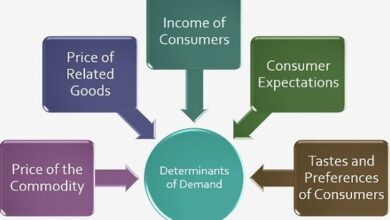CRM
CRM implementation requires the company to have an aligned culture, a structured business process, onboarding, implementation schedule, training and metrics.
Looking to find out how to implement a CRM in the company? Want to better understand how the tool can help boost results? Not sure where to start the process of incorporating CRM into your customer service routine?
Calm! The time has come to resolve these and other doubts about the CRM — Customer Relationship Management tool, which is becoming popular every day as an effective solution to integrate processes and make the customer’s shopping experience even more effective.
Proof of this is the research done on the subject. This, from the Tech Times portal, points to a growth of 25% to 85% in the profit of companies that use the CRM tool on a routine basis.
Want to understand how to deploy CRM in the company and open the door to fantastic results? Then continue reading this article.
If you are already familiar with the subject, you know that CRM is the abbreviation for Customer Relationship Management.
The CRM tool has exactly this function: to provide an interactive and easy-to-use platform, capable of simplifying and automating stages of the customer relationship , making it more fluid, personalized and, above all, effective.
Why does your company need a CRM?
Before understanding, in a practical way, how to implement CRM in the company, how about we recap some of the reasons why the solution may be what you need to achieve better results? Check it out below!
1-Increased productivity
The increase in productivity is one of the main impacts perceived by those who understand how to implement CRM in the company.
This is because the main feature of the system is to condense and offer key information in a simple and clear way to employees.
These are data that, at other times, would be dispersed in countless spreadsheets, documents and forms are now all in one place.
In addition, the CRM tool allows the automation of repetitive and bureaucratic processes , such as filling in tables, updating forms and sending standardized messages.
This way, the team has more time to devote to strategic tasks, while routine activities continue.
2-More fluid processes
Having the help of CRM software contributes to creating much more fluid and effective internal processes.
This is because it is common for the tool’s structure itself to encourage the creation of an organized sales funnel, which categorizes prospects, leads and customers according to their level of maturity.
In addition, the solution projects your next actions and allows the creation of alerts to follow the journeys .
Thus, the commercial team has a systemic view of all the company’s customers and can lead, in an organized way, the course of each one of them.
3-Valuable data organized and accessible
Have you ever heard the expression “data is the new oil”? For know that, in the world of customer service, this maxim is very true!
This is because, based on the behavior history of customers with similar profiles, it is possible to design effective strategies for approaching, negotiating, closing and after-sales.
In addition, having information about the customer‘s journey in their purchase journey at hand makes the action of support teams more assertive and safe.
1-Practical example of the value of data and the role of CRM
Suppose your company sells raw materials to a surgical glove factory. The sales team has access to a CRM tool that stores and provides data on the journey of each customer.
Customer X is in the negotiation phase and contacted support a week ago via email to learn more about one of the products sold.
Not satisfied with the feedback he received, he got in touch again, this time by phone, to obtain more specific information.
If the sales agent answering the call doesn’t have access to the customer’s contact history, he or she doesn’t know that a conversation has already been initiated through another channel.
Therefore, it makes the customer repeat all the information already provided to the company via email, which makes the customer unhappy.
In addition to impacting the consumer experience, this pattern of behavior can lead to an increase in the company’s churn rate .
On the other hand, with the help of the CRM, the agent accesses the customer’s data in the system and retrieves the entire conversation history initiated in the other channel .
In this way, it provides a much more secure, up-to-date and response-focused approach that the customer needs to continue their purchase process.
4-Integration of the sales force
Another noticeable advantage for those who understand how to implement CRM in the company is the integration between the sales force , especially the marketing and sales sectors.
Every company goes through or has gone through some of the classic problems of communication noise and lack of alignment between the marketing and sales sectors, from the different rhythms of prospecting and conversion to the difference in profile sought by both areas.
With CRM, access to sector information is democratized . Therefore, the marketing team can track the progress of the sales team and vice versa.
In this way, everyone clearly sees the role played by each sector and, above all, the importance of working in a coordinated manner to achieve the best results.
How to implement CRM in the company in 7 steps?
Ready! Now you’ve recapped the role of CRM and its benefits for customer management.
It’s time to take a step forward and talk about how to deploy CRM in the enterprise. For this, we have prepared a complete guide with 7 steps for you to follow!
1. Start working on the CRM culture in the company
The CRM culture is, above all, a collaborative culture . According to this principle, all areas operate simultaneously and in a complementary way to offer the customer the best possible experience.
Before understanding, in practice, how to implement CRM in the company, it is important that organizations prepare the ground for a customer-centric culture.
2. Understand your business process and list points for improvement
Then it’s time to look at the process! Understand how customer service and the sales force operate from start to finish. Identify failures, bottlenecks and possibilities for improvement.
If possible, involve the team in this step and ask the professionals to critically evaluate the current operating model.
Is it possible to optimize ticket and call management? How is the follow up routine? Is the call response time effective? Is the resolution rate as expected?
All answers will be useful to assist in the next step of the process.
3. Choose the best CRM for your case
With a good process mapping, it becomes easier to choose the best CRM tool.
Look for a system that offers specific solutions for the points listed, and be sure to jointly evaluate other topics, such as:
- cost;
- scalability (potential to expand the performance of the system);
- usability;
- support availability etc.
4. Communicate to the commercial team and start an onboarding process
Decision made? It’s time to communicate to the team! Remember that sales force buy-in to the tool is essential.
Therefore, this should not be an imposition of the board or information communicated in an authoritative manner.
Hold a meeting, list the benefits of the tool and make the reasons for the implementation clear. This is the first step to successful tool onboarding .
5. Create a deployment schedule
Complex processes, such as implementing a CRM in the company, demand organization. Therefore, it is essential to work with a phased implementation schedule.
Some steps that can integrate your company’s schedule are:
- system acquisition;
- implementation in the test areas;
- activation of system modules;
- evaluation of usability by the team;
- gap resolution ;
- official activation of modules etc.
5. Combine the schedule with onboarding trainings
Each completed step must be presented to the team in the form of internal marketing , internal communication actions or software integration training.
In this way, employees become familiar with the change and have less resistance to the new process.
7. Define metrics to track work with CRM
Finally, establish metrics to track CRM work, especially in the first few months post-implementation.
This management by indicators will be the thermometer to identify difficulties in adapting the team and needs for adjustments and improvements.




